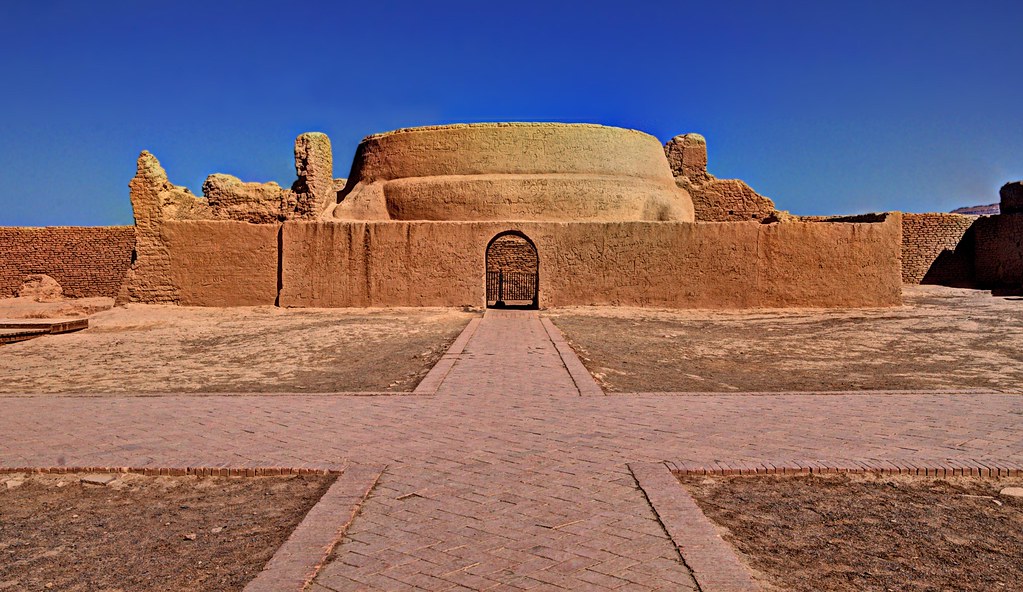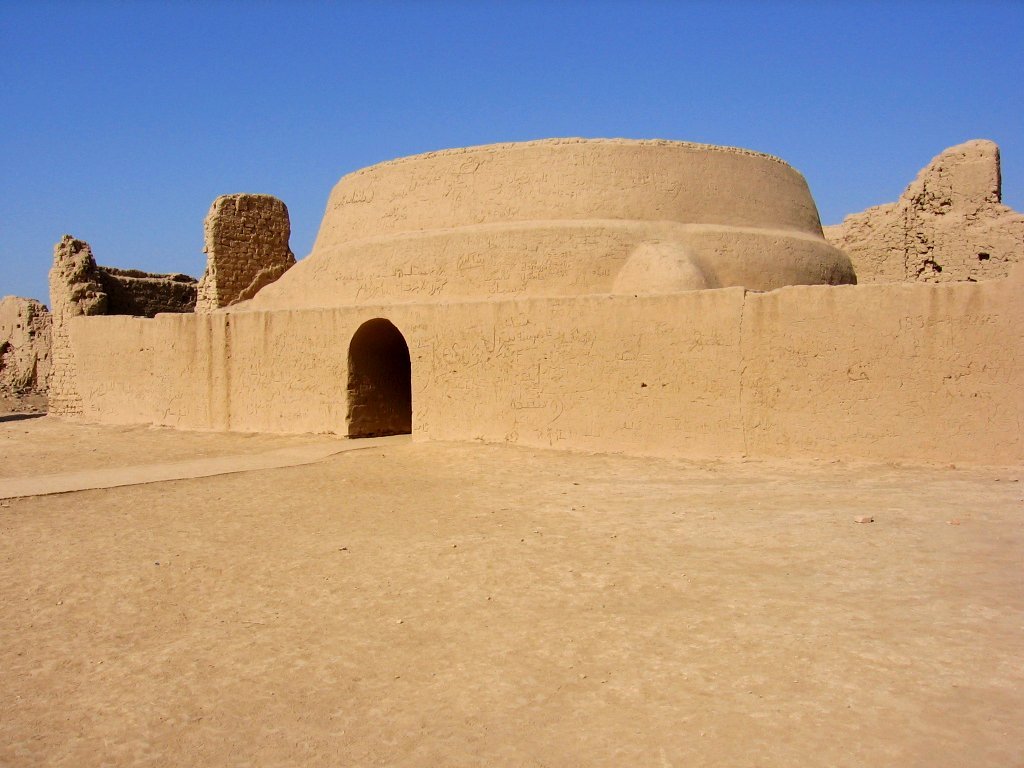Gaochang
Gaochang (Chinese高昌, Uighur Xoqo ), also Kocho, Chotscho, Khocho, Qočo or Qoco, is the site of an ancient oasis city on the northern rim of the inhospitable Taklamakan Desert in Xinjiang, China. She was a lively trading center and holding station for traveling on the Silk Road merchants.
The ruins are located 30 km southeast of modern Turpan ( Turfan ).
History
Gaochang was built in the 1st century BC. It was an important place on the Silk Road. In the wars of the 14th century, the city was burned down. Old palace ruins and the inner and outer city walls are still recognizable today.
Gaochang ( Qara - hoja ( قئارئاهوجئا ) pronounced in Uighur ) is in today's Xinjiang Uygur Autonomous Region, 30 kilometers from Turpan ( Turfan ). It was a transportation hub in western China. His story is not received very well documented, only traditional narratives for an accurate portrayal of history exist orally. The German name for the site is Chotscho or Kocho. The archaeological remains are located not far out of town to a place which was called by the locals originally Idykut -Shari or Idikutschari (see the work of Albert Grünwedel in the web link below). About the antiquities of the town was published by Albert von Le Coq (see web link below).
439 fled from Juqu Wuhui (沮 渠 无 讳, Jǔqú Wuhui ) and Juqu Anzhou (沮 渠 安 周, Jǔqú Anzhou ) listed remains of the Northern Liang by Gaochang, where they had the power to 460, when notified by Rouran (柔 然) were defeated. There were over ten thousand Han Chinese households in Gaochang, and the Rouran appointed in the year 460 a Han Chinese called Kan Bozhou as their vassals to the King of Gaochang.
At this time made the Gaoche (高 车) the Rouran in the Tarim Basin, the power dispute. The Gaoche King Afuzhiluo (阿 伏 至 罗) killed Kan Shougui and appointed a Han Chinese Dunhuang named Zhang Mengming (张孟明) to his own vassal King of Gaochang. Gaochang came under the rule of the Gaoche.
Later, Zhang Mengming was killed in an uprising of the people of Gaoche and replaced by Ma Ru (马 儒). 501 Ma Ru was himself overthrown and killed, and the people of Gaochang appointed Qu Jia (麴 嘉) from Jincheng ( in Gansu ) to his king. Qu Jia initially promised an alliance with the Rouran, but the Rouran khaghan was killed soon after by the Gaoche, and he had to the supremacy of the Gaoche subject. Later, when the Göktürks had gained power in the region, the Qu dynasty of Gaochang vassal of the Göktürks was. 640 Gaochang was annexed by the Chinese Tang Dynasty and renamed Xizhou (西 州).
From the middle of the fifth century to the middle of the seventh century, there were four independent kingdoms in the narrow Turfan Depression. These are known under the name of Kan - family (阚 氏 高昌), the Zhang family (张氏 高昌), the Ma family (马氏 高昌) and the Qu family (麴 氏 高昌). In the second year of the reign era Zhenguan ( 628) of the Tang Dynasty monk Xuanzang traveled through the famous Gaochang. In the 13th year of the reign era Zhenguan (640 ) of the Tang Dynasty, the district Gaochang was founded. According to the documents from the Yuan and Ming dynasties, the Qara - hoja the name of Gaochang as " Halahezhuo " (哈拉 和 卓) and " Huozhou " (火 州) was called. From the 9th to the 13th century was the center of a Gaochang Uighur Kingdom.
Buddhism
Buddhism spread over the northern route of the Silk Road from India to China, mainly in the 4th and 5th century to the beginning of the Northern Wei Dynasty. The construction of the Buddhist caves began during this time. The caves are mainly from the 9th century, the latest from the 13th century. There are large groups of them close Gaochang, the largest is that of the caves Bezeklik (Ch Bozikeli Qianfodong柏孜克里克 千佛洞).
In Chinese archeology, the site of Gaochang under the name Gaocheng is Gucheng (高昌 故城, Gaochang Gucheng, English Site of Gaochang ( Qoco ) City ), ruins of the ancient city Gaocheng ') or Gaochang Gucheng Yizhi (高昌 古城 遗址, Gaochang Gucheng yízhǐ, English Site of the old city Gaochang ( Qoco ) city, site of the ancient city Gaocheng ' ) is known.










